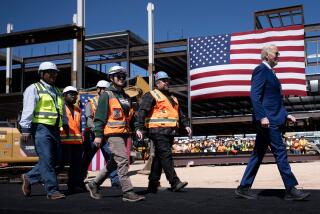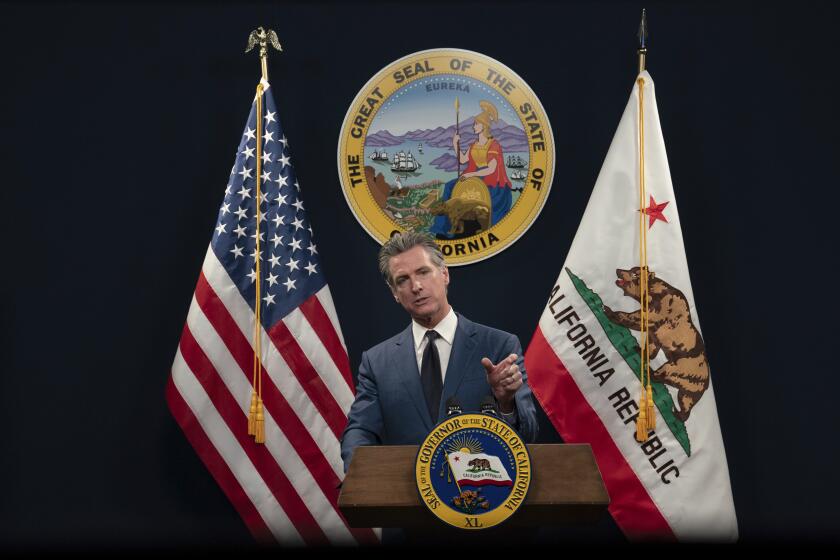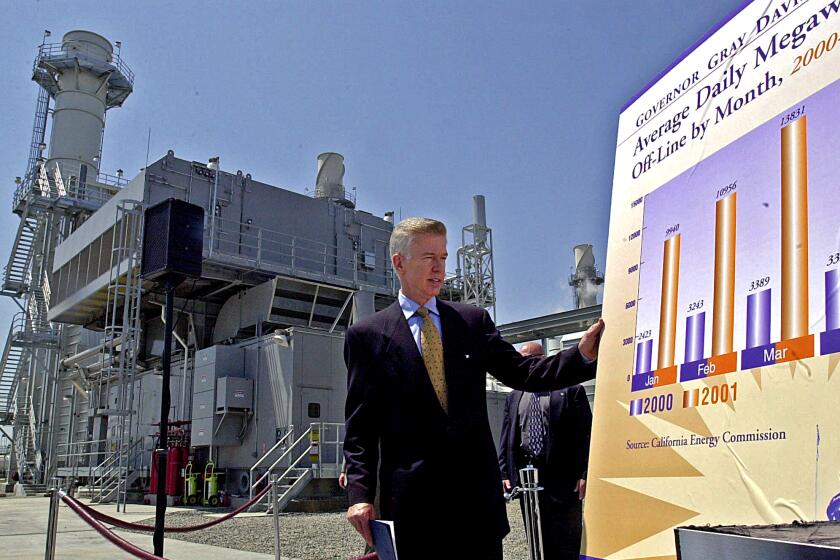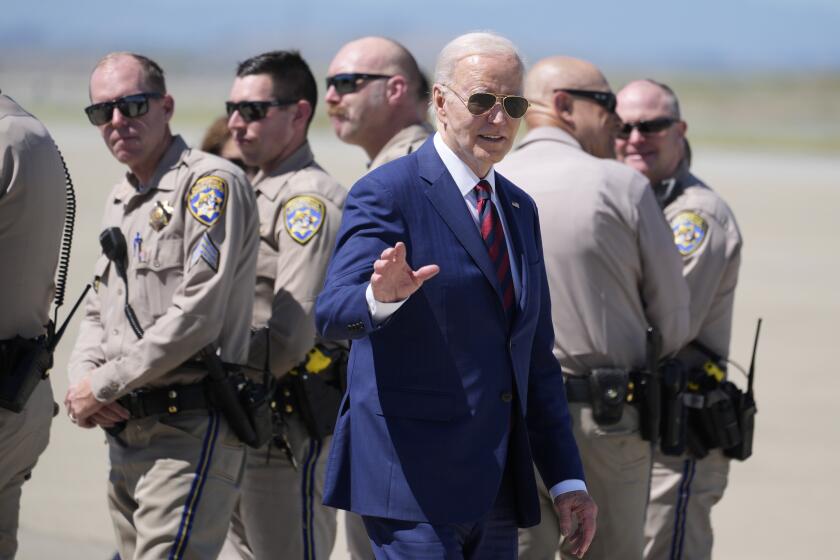No Longer L.A.’s Stepsister--or a Joke
Like most tourists, delegates to the Democratic National Convention will probably touch down in L.A.’s more famous spots: Venice Beach, Malibu, Brentwood and Beverly Hills. It’s a good bet they will ignore the San Fernando Valley (not including Universal Studios), the vast stretch of Los Angeles that lies north of the Santa Monica Mountains. Valley Councilman Joel Wachs recently quipped that Democrats couldn’t hold their functions there since most of them “don’t even know where it is.”
This would be a shame. In many ways, the Valley epitomizes the Los Angeles that most visitors probably believe no longer exists. Instead, it’s treated--and often thinks of itself--as the stepsister of Los Angeles, the butt of jokes and the place the rich and famous avoid. Yet, the Valley’s 1.7 million residents--roughly 40% of L.A.’s population and half its voters--live in a rapidly evolving, increasingly urban, multifaceted place that reflects the complex realities of many of America’s midopolises, or older suburbs, even as it perpetuates a historical vision of L.A.
For one thing, the Valley represents the center of the regional economy. With population and economic growth, particularly in technology and high-end services, occurring most rapidly on the suburban fringe, the Valley has emerged as the one place relatively convenient to the historic downtown core, the Westside and the burgeoning nerdistan on its periphery. According to a 1999 poll, Valley residents cited location as their reason for living there twice as often as any other factor.
The Valley’s renewed strength is evident in its office-vacancy rates, now in the single digits. It’s evident in new commercial and industrial development rising from the eastern edges of Burbank and Glendale to the western fringes of Calabasas. It’s evident in the number of new companies calling the Valley home. Along with the Westside, the Valley increasingly dominates the ranks of the region’s fastest-growing private firms.
According to an analysis by Cal State Northridge economist Shirley Svorny, the Valley boasts a sizable concentration of manufacturing companies, ranging from high-tech electronics to garments. Although not the preferred locale of the Hollywood elite and its digerati analogue, it’s the place to be for the people who make the entertainment factories run: specialized suppliers and lesser-known actors, producers and directors. Roughly half of the region’s entertainment industries, employing more than 60,000, or about twice as many as in the entire New York industry, work in the Valley.
The recent decisions of DreamWorks, Disney and the Cartoon Network to expand their facilities in the Valley suggest that the area’s entertainment primacy may be on the upswing. In addition to the presence of the giant studios Universal and Warner Bros., 5,000 small, often highly specialized creative-oriented firms service the region’s cultural-industrial complex.
But it’s not just business activity that separates the Valley from the rest of L.A. It also retains a relatively egalitarian character. The Los Angeles south of the mountains is increasingly a city divided between Westside rich and Eastside poor, a clone of old-style eastern cities with palm trees. By contrast, the Valley, a product of the great middle-class suburban expansion of the postwar era, remains largely a middle-class haven. It is not about income extremes. Only four of Los Angeles’ 50 richest people live there, compared with 19 in Beverly Hills. Unemployment in the Valley is relatively low, and its fraction of the city’s poor is also somewhat small.
Although an increasing percentage of its residents live in apartments and condominiums, the Valley still nourishes the great middle-class ideal of owning a home in a sunny, well-lit, comfortable community. Real estate prices on the Westside are more or less beyond the range of all but the affluent, and the average home in the Conejo Valley goes for nearly $400,000. The Valley, meanwhile, continues to offer housing options in the relatively modest $200,000-$300,000 range.
This is central to an idea of Los Angeles now mostly found in history books. Through its 1908 zoning plan, the first comprehensive urban-zoning ordinance in the nation, Los Angeles was planned to be an archipelago of detached, middle-class, single-family homes comfortably clustered amid a vast archipelago of village-like communities tied together first by the Southern Pacific railway, then by the freeway system.
By the 1930s, this vision had been realized with astounding efficiency; single-family residences accounted for 93% of the city’s residential buildings, almost twice the proportion of Chicago, spread over an area that made Los Angeles the world’s largest city in terms of space. This new kind of city would not, its boosters hoped, take on the chaotic, teeming character of the traditional metropolis; it would remain essentially pastoral.
More than the city across the hill, the Valley has remained true to this historical vision of a city of private homes. But, increasingly, demography has radically changed its context. Virtually all-white in the 1950s, the Anglo population dropped by more than 130,000, or 10%, between 1990 and 1998. In its place has sprung up a largely immigrant community that, much like the original settlers, migrated to the Valley in search of a better quality of life and economic opportunity.
Local residents, according to a recent survey by the Economic Alliance of the San Fernando Valley, are equally divided between those who think immigration has been “good” and those who feel it has made life worse. Ghettoization, particularly in the north Valley, has brought with it some degree of urban decay. But, for the most part, residential segregation is less extreme than on the other side of the hill. Rather than being made up of distinct ethnic pockets, much of the Valley is cross-quilted, with middle-class and working-class enclaves often juxtaposed. In many areas, unremarkable, even decrepit-looking boulevards encircle tree-lined residential neighborhoods that are often comfortably bourgeois and exceptionally close-knit.
Generally speaking, this is not the kind of urban America admired by most urbanists, new or old, who prefer more concentrated, traditional city geographies. Yet, recent experience in the Valley shows that progress toward a more coherent identity can proceed without the help of urbanist visionaries. The successful development of pedestrian-oriented “urban villages” in downtown Burbank and along Ventura Boulevard in Studio City and Sherman Oaks undermine the stereotype of Valley districts as simply place names obscured by mindless suburban sprawl.
With the Red Line extension to North Hollywood complete, the potential for a more urbanized, even hip, region is clear. The transformation of the NoHo district around the surprisingly busy Red Line terminus--now a jumble of small shops, bars and pedestrian-unfriendly car dealerships--may prove the principle that mass transit can successfully transform a traditional suburban community.
Managing change toward a more urbanized, multiethnic future is one of the great challenges facing the nation’s midopolitan regions in the digital age. Traffic congestion, gangs and crime have eroded some of the allure for many older suburbs. For example, despite a strong economy, nearly twice as many residents believed life in the Valley has gotten worse than those who thought it was better, according to the Economic Alliance survey.
The concerns of Valley residents echo the fears of many Angelenos who, like millions of Americans, yearn for nothing more than a sunlit, pleasant house of their own, a decent job and a safe place to raise their families. They are seeking to create a new kind of metropolitan existence that satisfies their desire for both community and private space. It is this search for a workable compromise that is the essence of midopolitan communities like the San Fernando Valley. Their issues--crime, schools, transportation--will shape the politics of the new century. *
More to Read
Get the L.A. Times Politics newsletter
Deeply reported insights into legislation, politics and policy from Sacramento, Washington and beyond. In your inbox three times per week.
You may occasionally receive promotional content from the Los Angeles Times.






